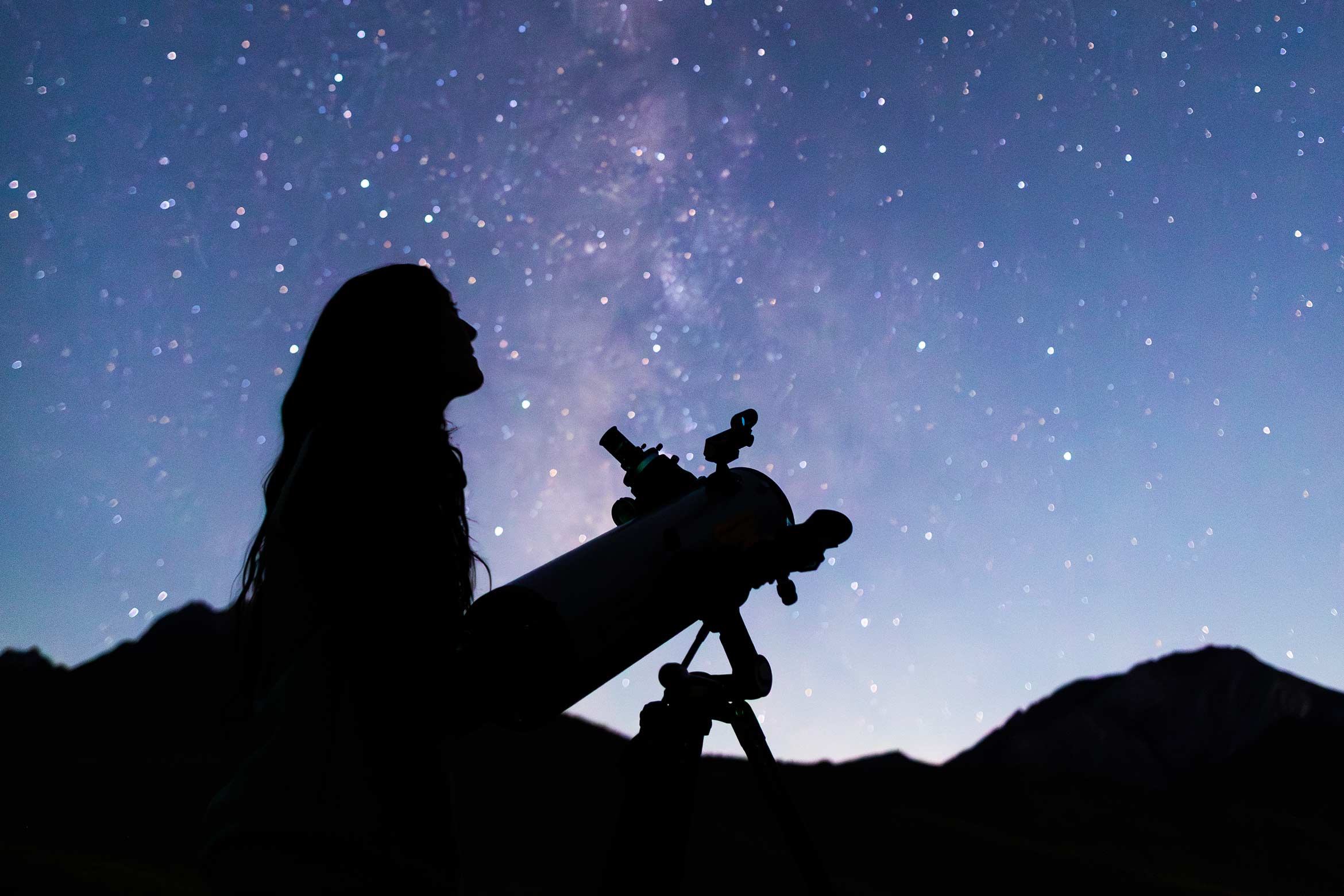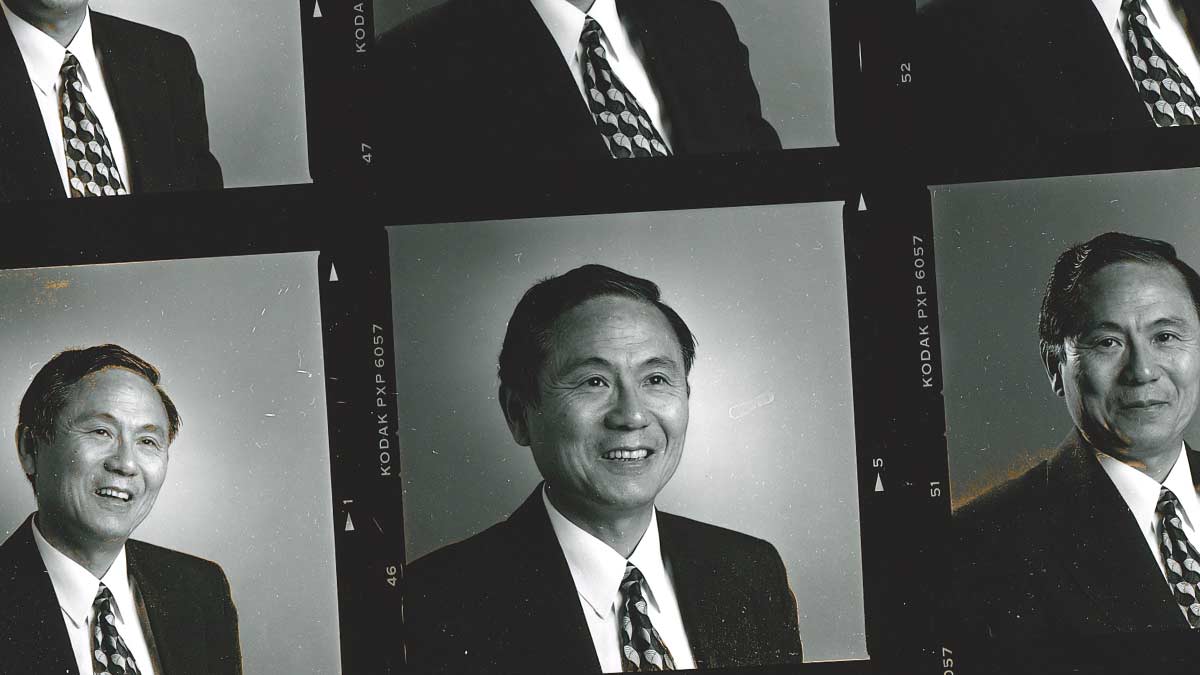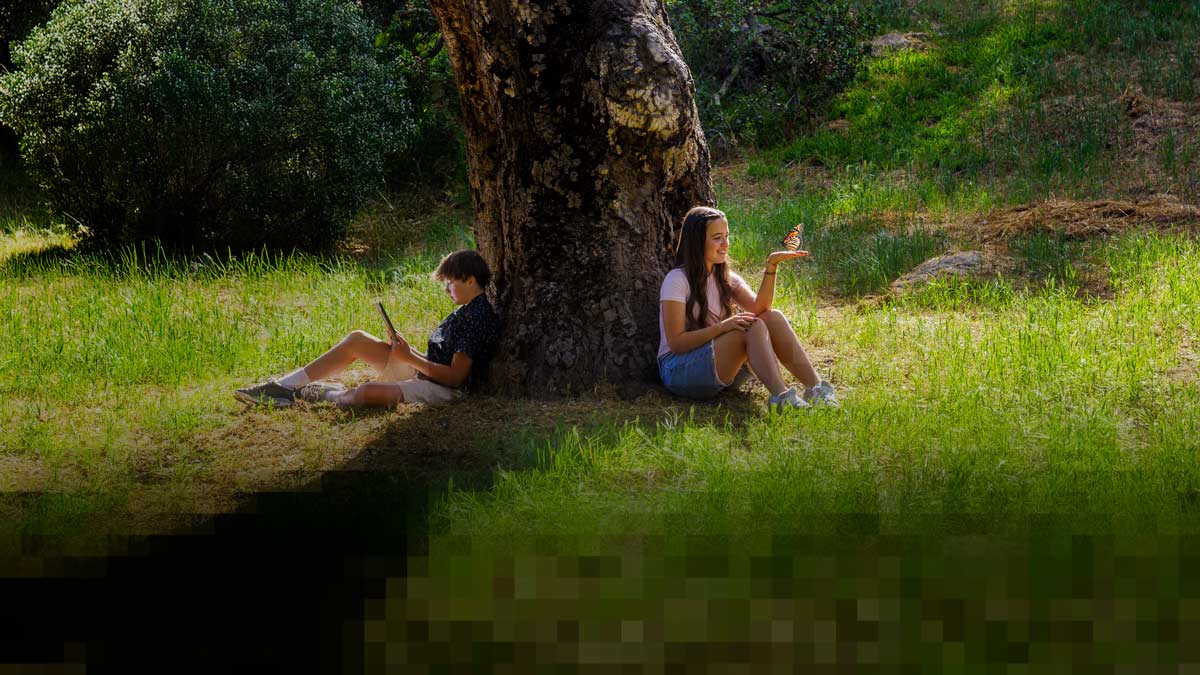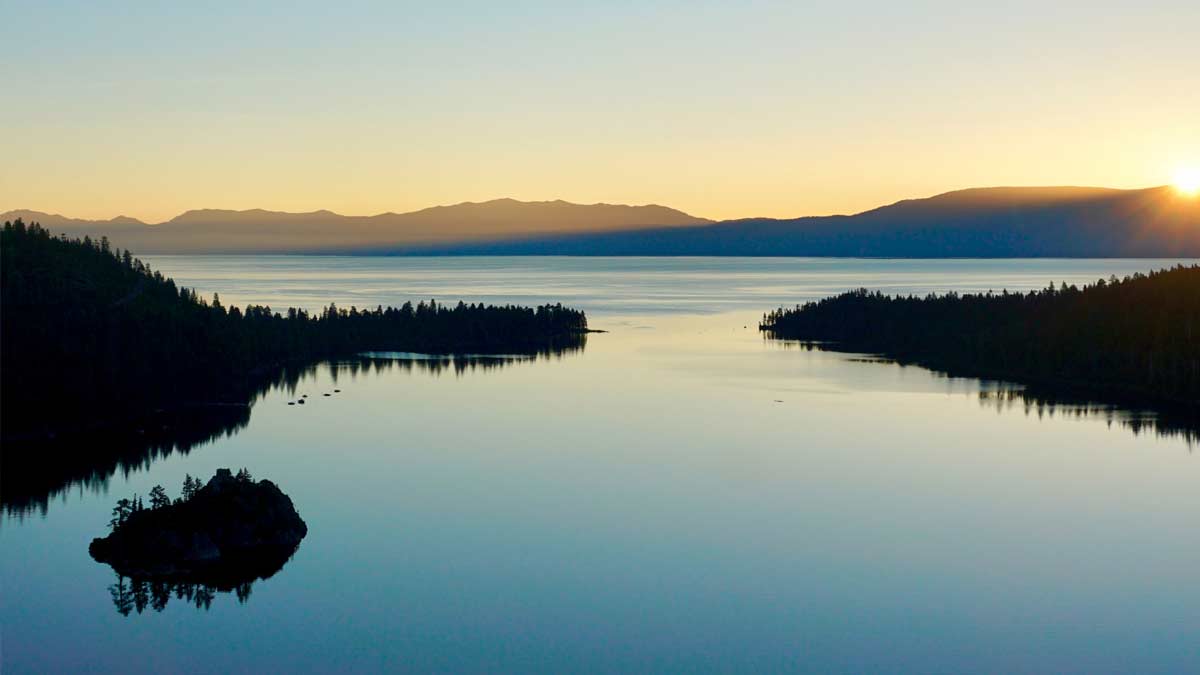
We love you, Lake Tahoe
We love you, Lake Tahoe
Meet five Gauchos who are leveraging their expertise — and their UCSB education — to protect one of the nation’s most iconic alpine lakes
by Shelly Leachman
Portraits by Joshlyn Wright
If you know, you know: There are few places more magical than Lake Tahoe. The first time you catch sight of this glorious blue beauty, you’ll also have to catch your breath. It’s that stunning.
As a Northern California native, I grew up visiting Tahoe on the regular — snow skiing many weekends over winter, frolicking on and around the lake for a week every summer. The latter tradition continues today with my own kids, who are now officially as smitten with Tahoe as me.
Whether it’s thick pine forests that get you, the gorgeously rugged terrain, the ever-crisp mountain air or the rejuvenating chill of the water (talk about a cold plunge!), the one feature of Lake Tahoe that all can agree is captivating almost beyond comprehension — its color.
The stickers are everywhere up there: Keep Tahoe Blue. It’s not just a catchy call to action to slap on the back of your car; it’s a movement, 68 years strong, to safeguard both the lake itself and the environmental health of the entire Tahoe Basin, so it can be enjoyed by all for generations to come.
The organization behind the slogan is the League to Save Lake Tahoe, a nonprofit that uses education, advocacy, engagement and, importantly, science and innovation, to identify problems and find solutions. Since 1957, when it was founded to stop a proposal to fill the Basin with a year-round population to match San Francisco’s and build a bridge over Emerald Bay — imagine?! — the League has been working to protect and restore the environmental health, sustainability and scenic beauty of the Lake Tahoe Basin.
These days they’ve got a handful of UCSB alumni helping them do exactly that, rolling up their sleeves and putting their minds together to confront all manner of evolving challenges, from wildfire and climate change to development, litter, invasive species and traffic.
Darcie Goodman Collins, Jesse Patterson, Kristiana Almeida, Matisse Geenty and Gavin Feiger — each with unique experience and expertise, but environmental champions all — are the slogan come to life: Keep Tahoe Blue.
Without further ado ...
Darcie (Goodman '01, PhD '08) Collins
Chief Executive Officer
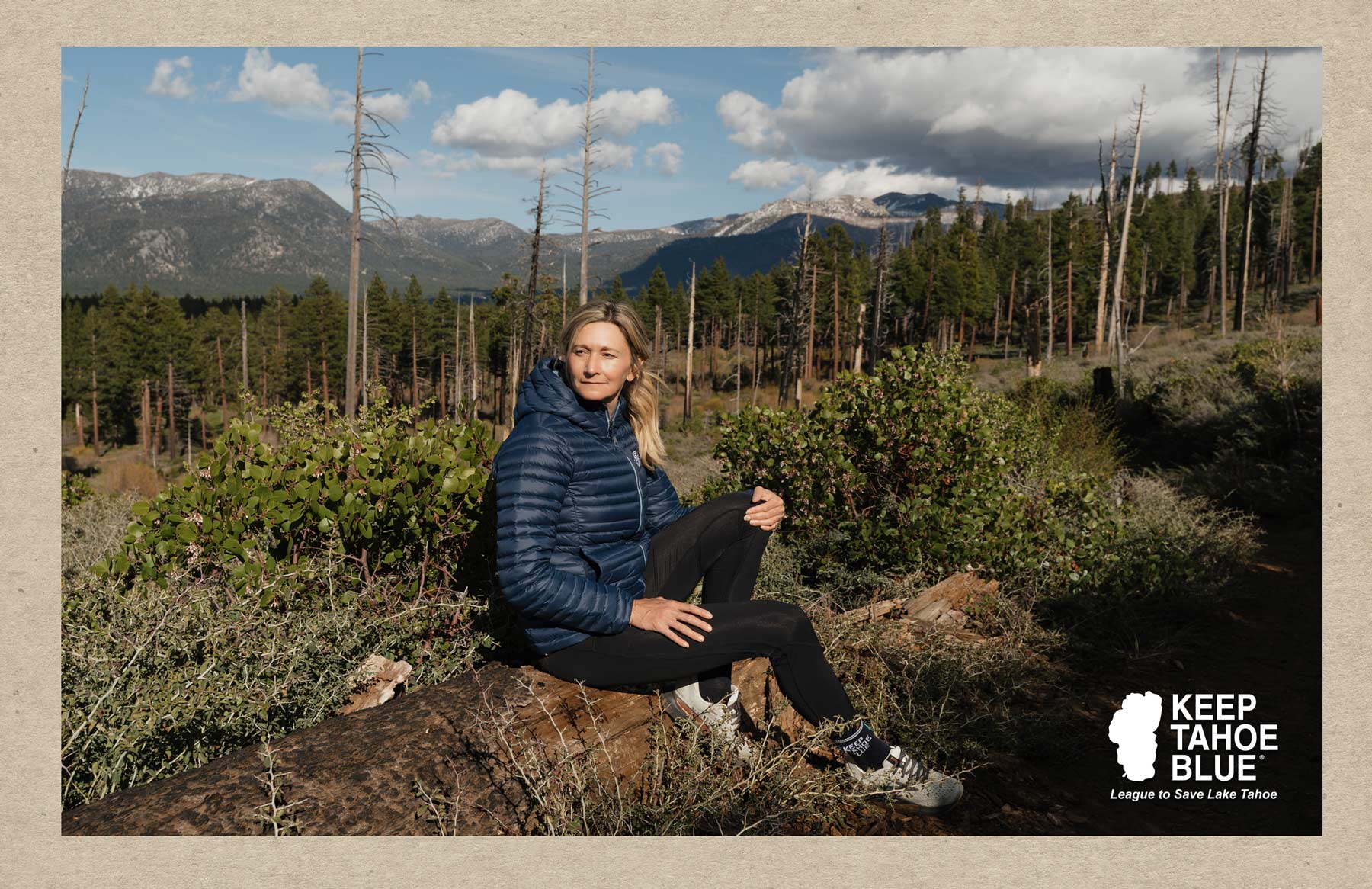
A native of Lake Tahoe, Darcie Goodman Collins grew up with all that beautiful blue right in her backyard. The water, like the jaw-dropping region itself, wasn’t just the stuff of pretty pictures — it was her way of life. And it would become her calling.
“I was certain at a young age I was going to do science, and I thought for sure I was going to do marine biology,” she says. “That was kind of my focus, really, since the time I was 6 years old.”
A high school internship with Keep Tahoe Blue — she was the organization’s first-ever intern — sowed the early seeds of what became her professional trajectory. Working closely with the executive director at the time, Goodman Collins saw firsthand a need that she, decades on, would come to fill: using science to inform policy.
“That veered my interest toward environmental policy and science, and it’s the reason I chose UCSB,” says Goodman Collins, who double-majored in aquatic biology and political science through the College of Creative Studies before earning her Ph.D. at the Bren School. In between degrees, she worked at UCSB’s Coal Oil Point Reserve, learning to fuse science and research with environmental management and community engagement.
That pursuit became her north star, ultimately leading her back to Lake Tahoe and to the League — this time as executive director. She had come home, and come full circle. Now helming the organization where she once interned, Goodman Collins is doing what first struck her as a teenager: applying science to the organization’s core aims of action, advocacy, education and community engagement.
Using a data-informed approach to combat trash — an issue that landed Tahoe in the national news after an especially messy Fourth of July — the group’s Tahoe Blue Beach initiative reduced litter at one popular beach by 97% and included the use of sand-sifting, beach- cleaning robots. They also secured a national first-of-its- kind municipal ban on the commercial sale of single-use plastic bottles. Most recently, they opened doors on an environment and education center to engage the public and nurture community stewardship around that lovely blue lake.
“What I love most is the interdisciplinary nature of the work,” says Goodman Collins. “Science, policy, community — all of it. And it’s incredibly rewarding to see the impact right here in the place I’ve always called home.”
Jesse ('02, MESM '08) Patterson
Chief Strategy Officer
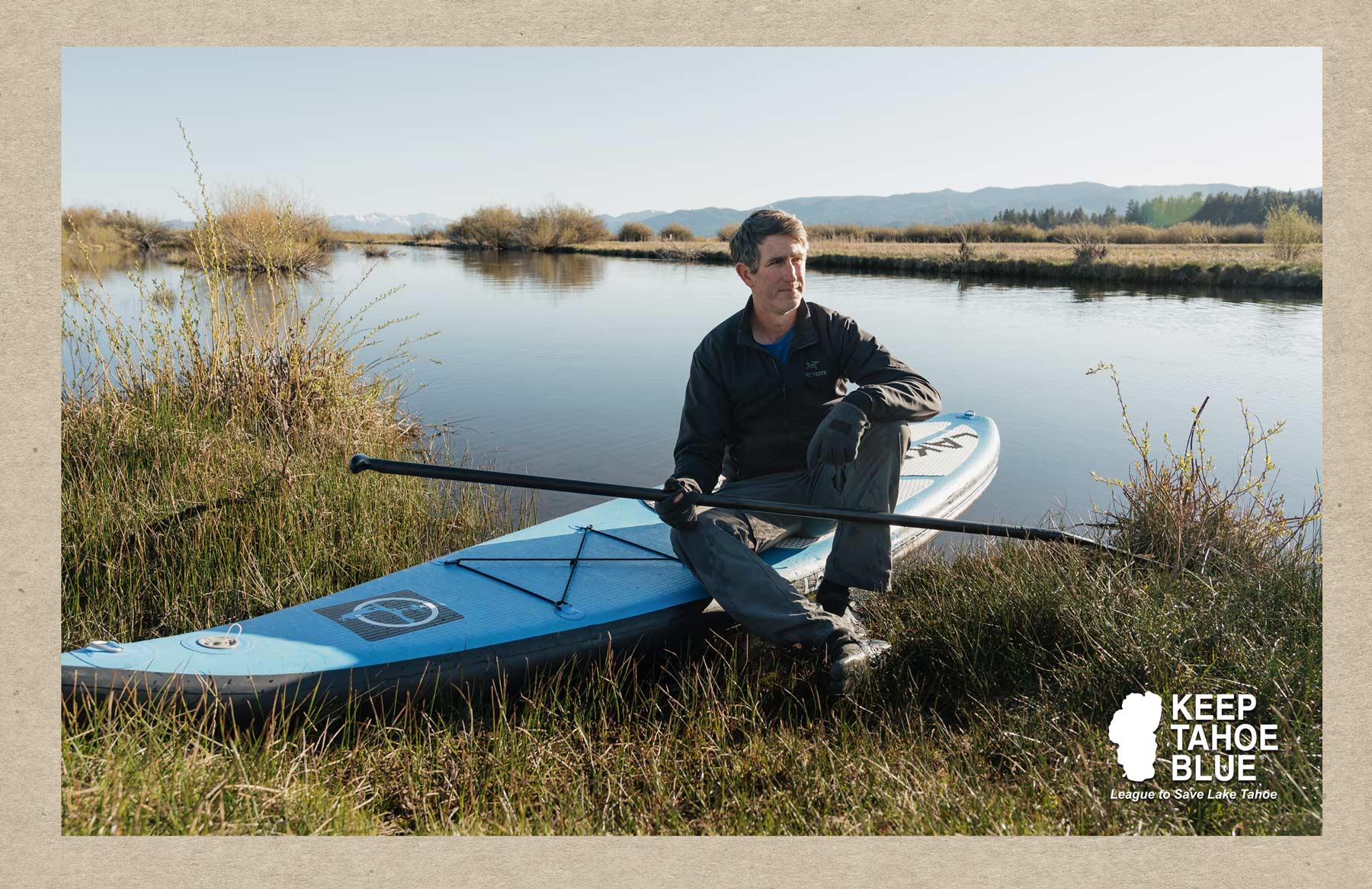
A love of nature has driven Jesse Patterson’s decisions for most of his life. Raised along California’s central and south coasts, surfing, boating, diving — “all things ocean,” he says — had his heart from an early age.
“So, it took about 20 seconds into a campus tour to go, ‘Yeah, this’ll work,’” Patterson recalls of his choice, in 1998, to attend UCSB. He stayed for 10 years. “What was really solidified at UCSB was my appreciation for the natural world, how amazing and beautiful it is. And honestly, how complex and fragile it is, and from a human perspective, how quickly we could destroy it.”
After earning bachelor’s degrees in aquatic biology and political science, Patterson worked several years for a coastal research and monitoring program within UCSB’s Marine Science Institute. His belief in the power of applied science to effect environmental change inspired him to pursue a graduate degree at the Bren School.
That belief — solidified at UCSB, validated in professional practice — has only grown over his years at the League to Save Lake Tahoe, one of the oldest (the organization was founded in 1957, 13 years before the first Earth Day) and, he says, most effective advocacy organizations in the nation for environmental work. This, in a place that sees some 17 million visits annually, where two states, five counties, two cities and 80 different groups have at least some jurisdictional authority.
“Being able to navigate not just the regulatory issues, the planning issues and the environmental issues but also the people issues is a big part of what’s made us successful,” Patterson says, “the ability ... to bring people along to the solutions.”
That approach has been proved repeatedly in efforts like the Tahoe Blue Beach program, which incorporated “leave no trace” principles — alongside upgrades to visitor education, wayfinding and facilities — to impact beachgoer behavior, reduce environmental impacts and gather the kind of data that precipitated local bans on the most commonly found litter items in Tahoe, including plastic bags, Styrofoam and plastic bottles. Another example: a groundbreaking, scientific test to evaluate all available tools — proven and emerging — to contain and control the largest infestation of aquatic invasive weeds in Lake Tahoe.
Patterson and the League pilot innovative approaches, convene partners in collaborative projects, provide seed funding and engage the public to move from environmental threats to proven solutions. “All our work demonstrates, to my mind, that people can visit and live in a place like Tahoe without wrecking it,” Patterson says. “Anyone who comes to Tahoe, the first time they see it is like, ‘Whoa.’ It’s worth protecting. Nature is essential. We’ve only got one planet, as far as we know, so we better take care of it.”
Kristiana (Kocis '06) Almeida
Chief Operating Officer
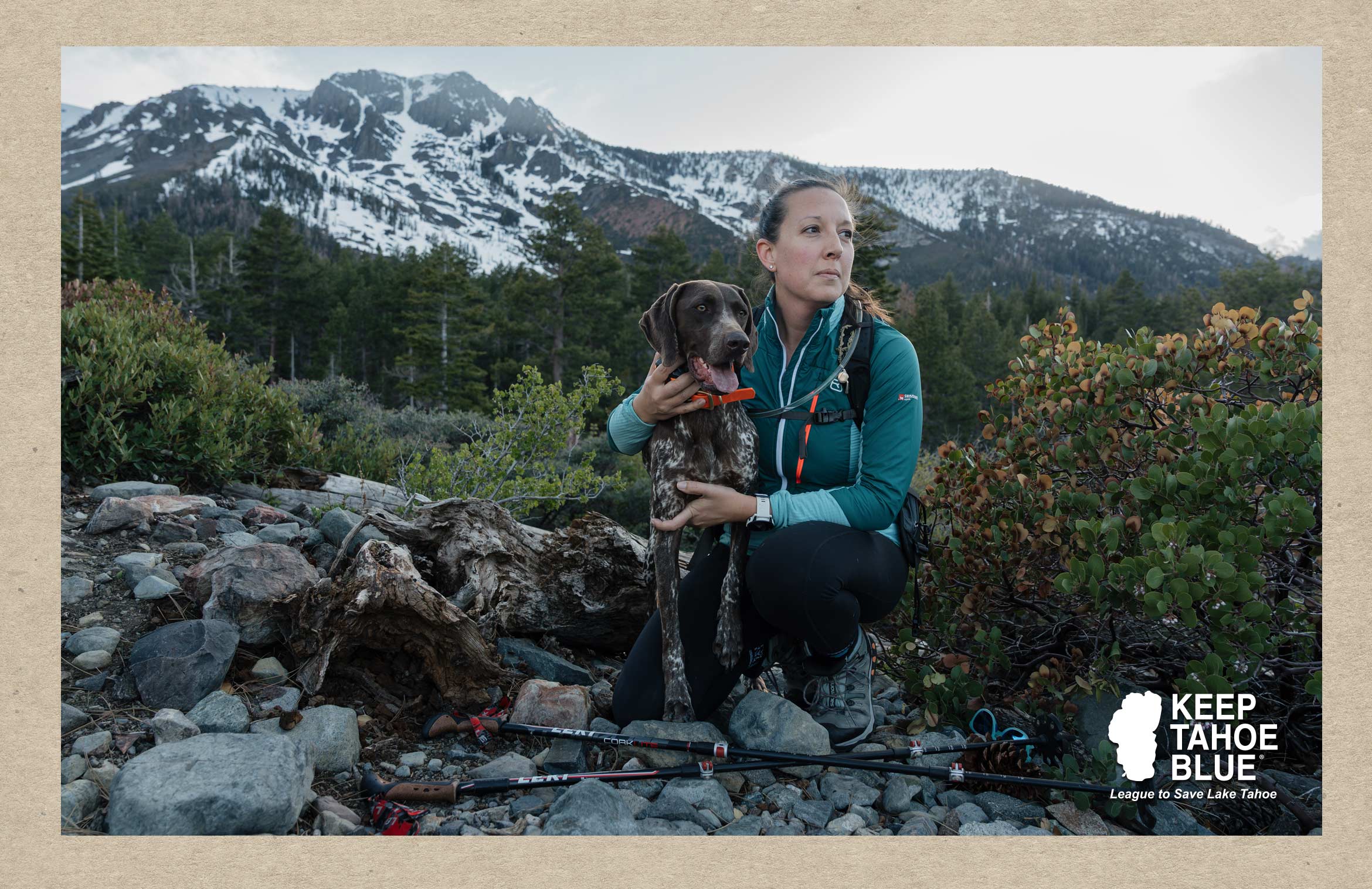
A degree in medieval studies may not exactly scream “solid route to environmental policy work,” but it sure worked that way for Kristiana Almeida, who credits the former discipline for imbuing her with the critical thinking skills that have made her so successful in the latter.
“Probably the biggest part of my job is problem solving,” she says, “and the medieval studies major, though zero environmental background is associated with it, really taught me to look at big problems from a multitude of angles to get to interdisciplinary solutions.”
Then there are the operational skills and fundraising expertise Almeida honed as a member of UC Santa Barbara‘s development team post-graduation and, later, the communications savvy she sharpened while working for National American Red Cross. All of her prior experiences paid dividends when she joined the League in 2022.
It also doesn’t hurt that she grew up just outside Lake Tahoe.
Almeida’s rich personal connection to the region — paired with the interdisciplinary ethos she gleaned in her time at UCSB — underpins her belief that a holistic approach is key to successful environmental advocacy and action.
“You can’t use just one tool to fix everything when it comes to protecting Lake Tahoe,” she says. “It really is a breadth of tools we’ll need to protect Tahoe for generations to come. And we’re committed to continuing evolving that process because especially with climate change, what worked yesterday isn’t going to be what works tomorrow.”
To that end, Almeida and her Keep Tahoe Blue colleagues are looking ahead.
The League recently secured passage of the Lake Tahoe Restoration Reauthorization Act, ensuring that $300 million of unspent funds from 2016 legislation will keep federal support flowing for restoration, research and aquatic invasive species and wildfire prevention. They also supported a partner public agency’s acquisition of 31 acres of severely disturbed land along a river corridor, and are now helping guide the site’s restoration to native habitat that will reconnect nearly 800 acres of marsh and meadow.
To Almeida, it’s all part and parcel of a League-wide commitment to using an interdisciplinary lens to consider problems and craft solutions.
“What happens outside of Tahoe can deeply impact what happens in Tahoe,” she says. “So how do we educate people visiting the basin, and empower people living in the basin, to help create and be part of those solutions? As we’re looking at the interconnectivity of everything, this is an opportunity for us to help others, too.”
Matisse Geenty ’15
Philanthropy Director
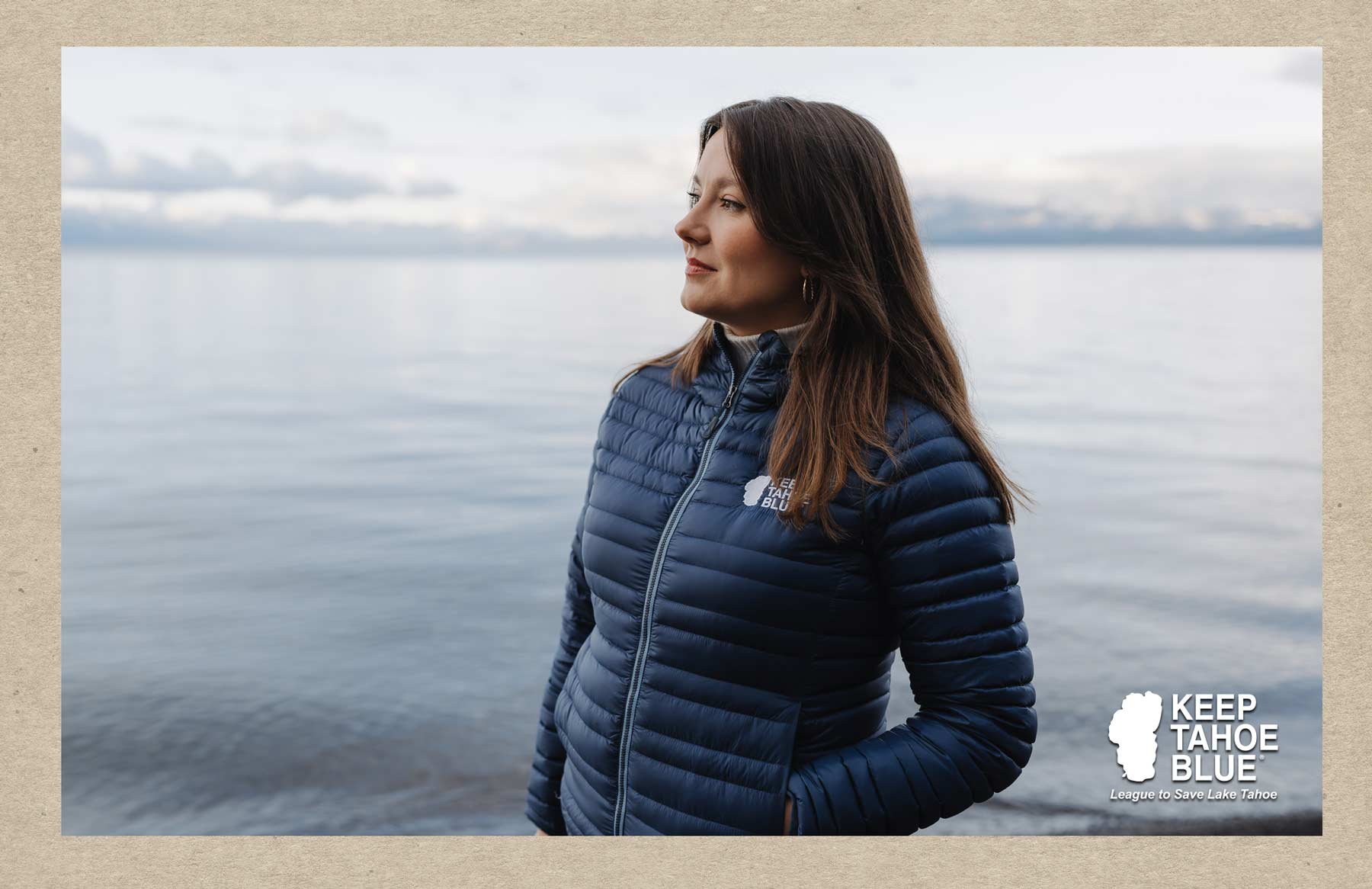
Arriving on campus with a violin under her arm and stars in her eyes, Matisse Geenty chose UCSB for the opportunity to continue her classical music studies in a multidisciplinary setting while pursuing a performance degree. Life had other plans.
Sidelined from performing after two successive injuries, Geenty shifted her gaze from center stage to backstage — all the way back, in fact, to arts administration. She pivoted to focus her degree on sustainable revenue models for the arts. And that’s exactly what she did after graduation, fundraising for orchestras and arts organizations in California.
Tahoe came calling during the pandemic. Geenty grew up nearby and dreamed of returning; remote work made it easy to pull off. Yet she wanted to join a local organization where she could guide philanthropy to benefit the region she’s always seen as home. The League has proved the perfect fit.
“We’ve had so much success unlocking public funding with just small amounts of private funding,” says Geenty. “A $25 private gift for cleanup materials could lead to citizen science data from that cleanup that could guide efforts to secure long-term, sustainable public funding to, say, reduce microplastics in the entirety of the region.”
All credit to the interdisciplinary ethos at the heart of Keep Tahoe Blue, says Geenty, who came into the organization by way of UCSB and, more specifically, by way of the humanities. Her belief in that philosophy of connection is as deep as the lake itself.
“The League brings together unlike-minded partners to get at collective solutions, and you cannot do that from a single lens,” she says. “You can’t just say, ‘One size fits all.’ So what does it look like to have holistic solutions around the whole (Lake Tahoe) basin that are also adaptive?”
The Tahoe Blue Beach program, which this summer will expand to three more beaches, is one example of that approach. Another is the Tahoe Blue Business program, an initiative to support local businesses in their own environmental best practices and promotion of stewardship behavior for their clientele and, in turn, to cultivate business support for the League.
“We are running the programs on the ground, testing solutions through science, then scaling through our incredible volunteer force,” Geenty says. “And we’re doing it all through our lens of, ‘How do we build a model of sustainable recreation, of protection, of care for these wild, beautiful places?’ Tahoe is a place where we want people to be able to live and thrive and enjoy with their families. We are here to protect your future memories.”
Gavin Feiger MESM ’10
Policy Director
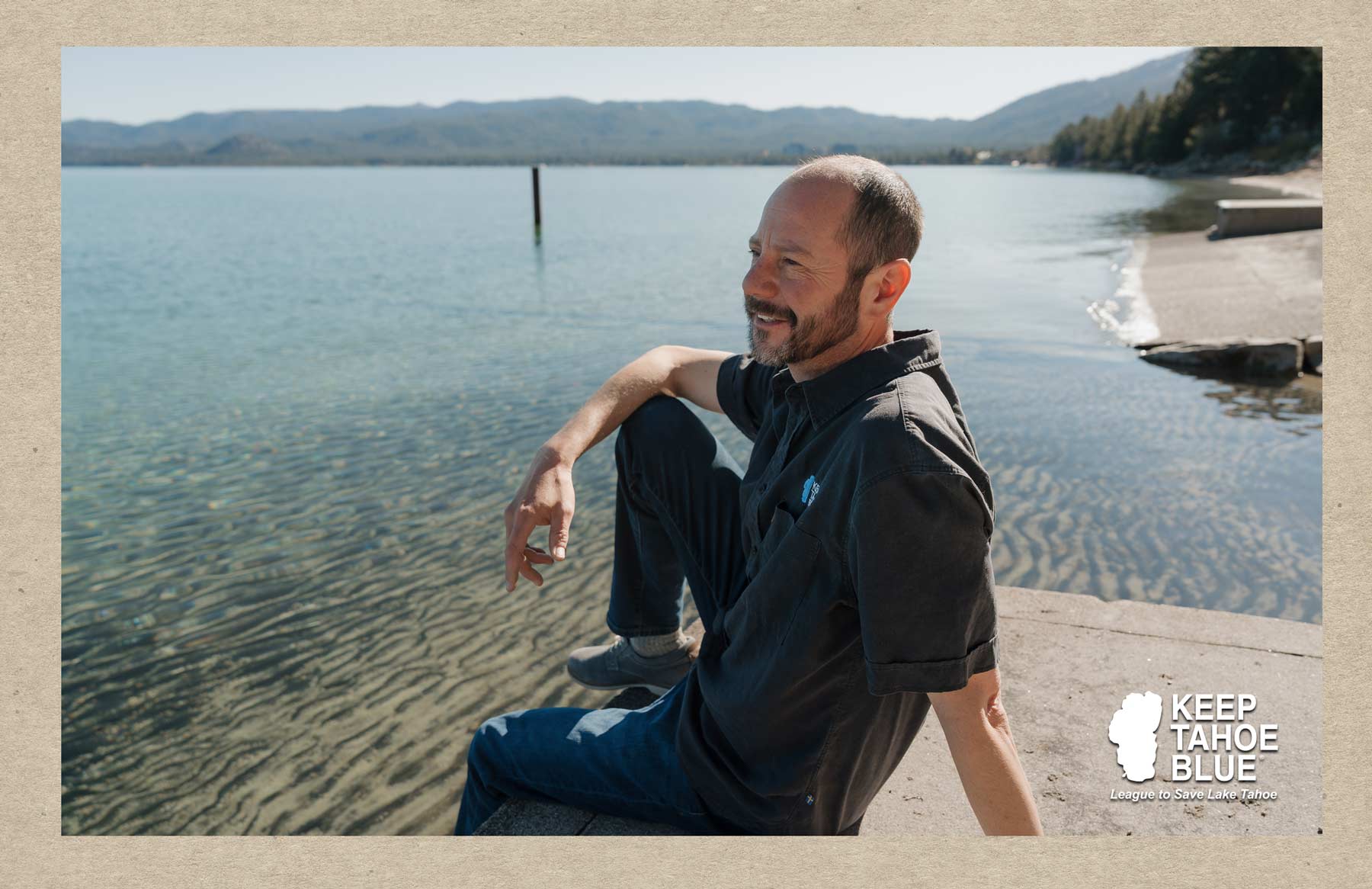
“Oh wow, where do I start?” replies Gavin Feiger, asked about his passion for the Lake Tahoe region and for his work with the League, suggesting the list of superlatives will be long. “Working on local, regional and even national issues that affect the lake, being so place- based in a place that I live and love and have a family — it’s so rewarding, every day.”
It’s exactly what Feiger hoped for since deciding, earlier in his environmental career, to hit pause on full- time work in order to pursue graduate studies. It was Bren School or bust for this Montana native and University of Washington grad, who was drawn by the group project requirement, the career training and the promise of a professional master's degree.
Two years later, his professional trajectory had officially accelerated. After brief stints in Washington, D.C., and back in Seattle, Feiger landed at a different Tahoe nonprofit, then another, before settling in seven years ago with Keep Tahoe Blue.
Directing the organization’s policy work, Feiger heads up local advocacy around land use, transportation and natural resources, among other issues. His savvy in environmental science, management and research is a serious value add in the complex environmental regulatory system that is Lake Tahoe.
“Even though Tahoe has a lot of really strict environmental rules, it’s still never enough — you’re always fighting for those,” Feiger says. “We encourage project developers to go above and beyond to include more stormwater treatment, better transportation solutions, all the environmental protection pieces you could want to protect Tahoe’s unique water quality and clarity.”
With Feiger at the policy helm, the League brought bikeshare to Tahoe for the first time, and piloted a micro- transit program using small vans as an on-demand ride service — like a fleet of Uber XLs, but with free, shared rides — to reduce traffic and the pollution it creates. He was part of the plastic bottle and bag bans, and he is helping to secure funding for forest health initiatives and create a policy structure for invasive species management plans.
“We have gotten a lot of environmental rules put in place and the amount of development in Tahoe is permanently capped,” he says of the League’s successes. “But as people and their habits and behaviors change, we have to address those, too. The idea is: You don’t just see Tahoe; it’s an experience. You can actually contribute and participate in protecting and conserving it. We think that’s a really important and necessary part of what will keep Tahoe blue. It’s not about Tahoe for me, it’s about Tahoe for all.”
